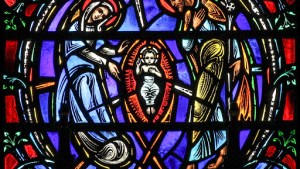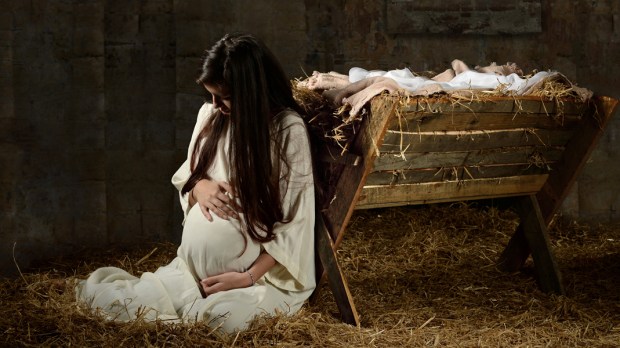It’s not the part of labor and delivery that stands out, and you can bet it doesn’t make into a lot of people’s birth pictures or new baby announcements, but in and around the Christmas season especially, it’s worth remembering the placenta — what it meant to Jesus and Mary, and what it means to us.
Quick refresher, if you’re foggy on what a placenta is and does: It’s the organ that connects an unborn baby with his mother. The baby’s umbilical cord attaches to the placenta, and the mother’s body sends oxygen and nutrients through it to the baby. It also filters waste out of the baby’s blood, regulates the temperature of his environment, and produces the hormones that make the pregnancy possible.
Here’s the best part, though. The placenta is an organ that the mother and baby build together. We can’t say the mother’s placenta belongs to her in the same way that her womb is hers; the placenta belongs to mother and child both. Part of it is built by her body, and part by the baby’s body, but it’s one single organ — with both of their DNA.
So Mary didn’t only carry Jesus in her womb during those months leading up to Christmas day. She and he were actually attached — by a human organ that belonged to them both.
It really brings home what Jesus did, coming to earth, and asking to be named Emmanuel, God with us.
Later, when Jesus was preaching, somebody calls out to him, “Blessed is the womb that bore you and the breasts at which you nursed!” Luke tells us that Jesus answered: “On the contrary, blessed are those who hear the word of God and observe it.”
Here is a God who wants to be so close to us that he became man — not just showing up out of the blue as an adult, but growing inside of his mother’s womb, sharing an organ with her, letting their two bodies be so intimately united — and now he says to us that those who hear the word of God and observe it can be united with him like his own, immaculate mother was.
We’re not immaculate, but that’s not the point. Jesus wants to share his life with us. We talk like he just wants proximity. He wants more. We talk about bringing Jesus into our life, making room for him in the inn, remembering him through the season, and all of that is good. But Jesus wants to be closer.
Jesus started his human life as every life starts, burrowed into the lining of his mother’s uterus. As he grew, their bodies worked together, God’s body and her immaculate one, building the placenta that attached them until he was ready to be born.
Some of us are mothers, and we remember sharing our body with our children. But all of us have mothers, and even though we don’t remember it, we began our lives connected to them in the most intimate way imaginable. If you’ve ever doubted that Jesus truly wants to be with you, remember that the unity in which your own life began is only a shadow of the unity that Jesus is hoping to have with you.

Read more:
Mary’s “Yes” and Jesus’ Birth Put the “New” in New Year

